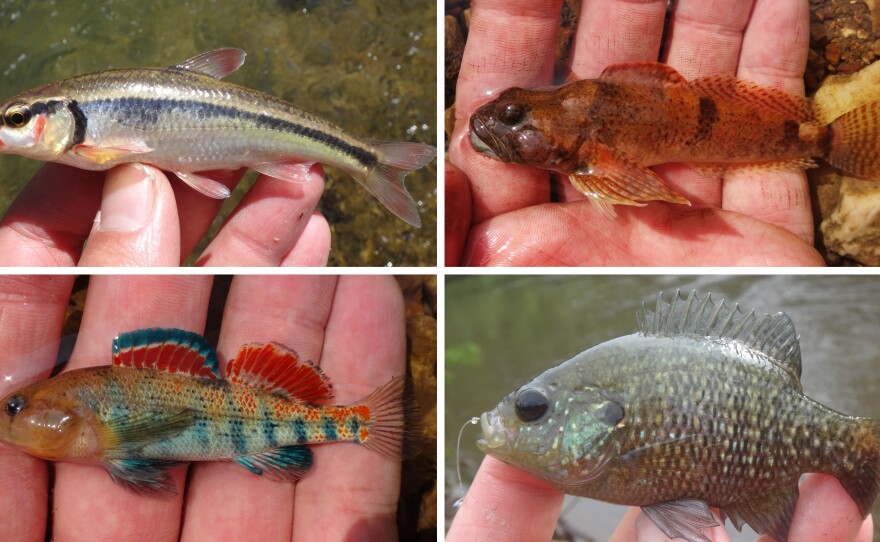Catching the biggest fish usually comes with the biggest bragging rights, but now there's a new breed of anglers working to hook those at the other end of the spectrum, and while the catch might not be as big, the bragging rights are.
As the owner of Tombstone Tackle bait shop in Columbia, Mo., Adam Wolf has a lot of ways catch fish.
"Night crawlers, minnows, shiners, goldfish, and the frozen bait like chicken liver, turkey liver, shad guts, shad sides, skipjack herring, vacuum seal whole shad," says Wolf as his list of lures goes on.
Wolf likes catching big fish. Really big fish.
"I caught two 96-pound blue cats, biggest bass are probably around 10 pounds, biggest crappie I caught two three pound crappie," Wolf says.
As Wolf's list shows, there are many options for fishers looking for bait that the big fish will bite on, but when anglers are looking to land fish closer to the size of the bait in Wolf's shop a new sport rises. It's called micro fishing and it's growing in popularity.
It's a hobby where instead of trying to catch the biggest fish, you target the smallest fish and the largest number of species, a process known as life-listing. It's like what birders do, but for fish caught with a rod and a reel.
Across town from Wolf's bait shop, Michael Moore — no, not the documentary film director — is wading in shallow creek turning over rocks and looking for tiny bugs to use as bait and it looks like he's found a few.
"Oh gosh, I think they're eating each other — um, I have not taken aquatic entomology, but most of them are different kinds of mayflies.
Moore, a doctoral student in fisheries conservation at the University of Missouri, is on one of his first micro fishing expeditions. As schools of sand shiners flit about in a rocky pool, Moore explains the type of gear this hobby demands.
"Micro fishing you're using the smallest size hook you can find at your local tackle stores, so like your fly fishing hooks and things like that," Moore says. "And instead of casting, like you would with regular fishing, it feels really weird, but you're usually just dangling the bait in front of fish that you can see."
Moore puts one of his mayflies on a hook, and dangles it in the water. Only a minutes passes before he gets a bite.
"So this is a little bluegill. You can catch a lot of these on regular lures too, but ones this small are usually hard to catch," Moore says while holding the small fish.
To get hooks small enough to catch a lot of micro fish species, micro fishers sometimes have to order them from Japan, where the hobby is more popular. In the U.S. the fish species with the biggest variety are micro fish like minnows and darters, so with that many options, you want to have the right hooks.
"Some people have like 400 species on their list and they're adding to it all the time," Moore says.
Those people include Ben Cantrell, a micro fishing enthusiast in Peoria, Ill., who runs the website microfishing.com and its associated Facebook page.
"Well I just passed 400 on a trip earlier this summer," Cantrell says. "I'm nowhere near the top. There's a guy out in California, Steve Wozniak — not the co-founder of Apple — he's got 1600 or so."
In seeking out new species to add to their list, micro fishers sometimes resort to extreme measures, like driving across several states to catch just one specific species, or camping out on frozen lakes, using sonar to target fish.
This sport certainly isn't for everyone, and Cantrell is used to people thinking his hobby is a little weird.
"A lot of people will ask us what we're doing when they see us fishing," says Cantrell. "Some people are puzzled, some people are interested and sometimes we convert someone into trying."
And Cantrell says the hobby is growing, convert by convert, which will likely translate to a lot of pictures of little fish, and a lot of little fish stories.
Copyright 2016 KBIA-FM. To see more, visit KBIA-FM.






